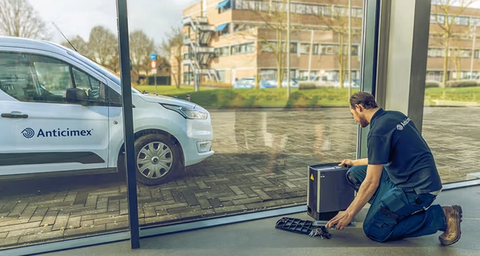Blog Article
What is Data-Driven Pest Control?
Data-driven pest control, such as Anticimex SMART Solutions, utilizes technology and data analytics to proactively manage pest problems in industries like food production. Moving away from traditional reactive methods, it offers a more sustainable, non-toxic approach to pest management.
This method helps businesses build resilience, safety, and a forward-looking strategy. Here are five compelling reasons to adopt a data-driven approach to pest management in the food processing, manufacturing, or distribution industry.
1. Early Detection of Pest Issues with Digital Monitoring Systems
Digital transformation is reshaping industries, with automation, IoT, and data-driven solutions helping food manufacturers stay ahead in an increasingly competitive market. However, this technological shift can also leave logistics warehouses and processing facilities more vulnerable to pest infestations, as fewer staff are on-site.
Pests can damage vital equipment, such as technical cables, disrupt production processes, and pose significant safety risks.
An intelligent pest monitoring system offers early detection and enhances operational efficiency. Anticimex SMART Pest Control uses strategically placed sensors and cameras to monitor pest activity and temperature fluctuations in high-risk areas. Our digital traps capture pests using non-toxic methods, providing round-the-clock monitoring and minimizing the risk of contamination.
2. Data-Driven Pest Control for Regulatory Compliance
With growing emphasis on sustainability and hygiene, regulations in already highly regulated sectors are becoming increasingly stringent. Consumers are also demanding greater transparency regarding hygiene standards. Given that pests can spread over 200 known diseases, "good enough" is no longer sufficient when it comes to pest control.
Anticimex SMART delivers continuous monitoring and analysis, with the ability to export data for external parties such as regulatory bodies (e.g., BRC or ISO). The system offers seamless documentation through an online customer portal, simplifying reporting and audits, so you can focus on other critical areas of your business.
3. Predictive Analytics to Prevent Property Damage
Data-driven pest control leverages digital monitoring systems, documentation, and trend analysis to create predictive insights.
By analyzing historical data and emerging trends, pest control providers can forecast potential locations and times for pest activity, allowing for proactive management.
Facilitating Data-Driven Decision-Making
The real-time data generated by digital monitoring systems empowers pest controllers to make informed, data-driven decisions. Access to historical trends, current conditions, and potential risks enables a more strategic approach to pest management.
Regulatory bodies are increasingly prioritizing data-driven decision-making, and digital pest prevention systems help managers align with these standards. This wealth of data supports strategies such as "proofing the building"—sealing entry points to significantly reduce the risk of pests damaging property. Additionally, it underscores a commitment to best practices endorsed by industry compliance standards.
4. Data-Driven Pest Control for Sustainability and Minimizing Food Waste
Food companies face growing pressure to reduce food waste while complying with stricter biocide regulations. Every year, rats destroy and contaminate enough food to feed 200 million people worldwide.
While the link between food waste and product recalls is often overlooked, biological contamination by pests remains the leading cause of recalls. This presents a significant financial risk and can severely damage customer relationships.
- 21% of people affected by a recall would never buy a product from the same manufacturer again.
One effective way to minimize waste, prevent recalls, and maintain customer trust is by keeping pests at bay. Implementing an intelligent pest control system like Anticimex SMART can produce noticeable results within days.
Moreover, the system reduces reliance on chemicals (such as rodenticides or insecticides) and cuts down on technician visits, leading to lower CO₂ emissions and a more sustainable approach to pest management.
5. Cost Savings with Digital Pest Control
One of the key reasons to adopt a digital pest management system is its potential for significant long-term cost savings.
By proactively preventing infestations, companies avoid costly infrastructure repairs, lost revenue from recalls or production delays, the expense of replacing contaminated products, and the risk of losing customers due to failed audits or potential lawsuits.
The initial investment in 24/7 monitoring and documentation proves to be a smart financial decision, safeguarding both the bottom line and the company's reputation.
Additionally, once the system is in place, there is no need for technicians to conduct routine checks on traps, as the system provides real-time insights. This eliminates unnecessary technician visits and associated costs.

